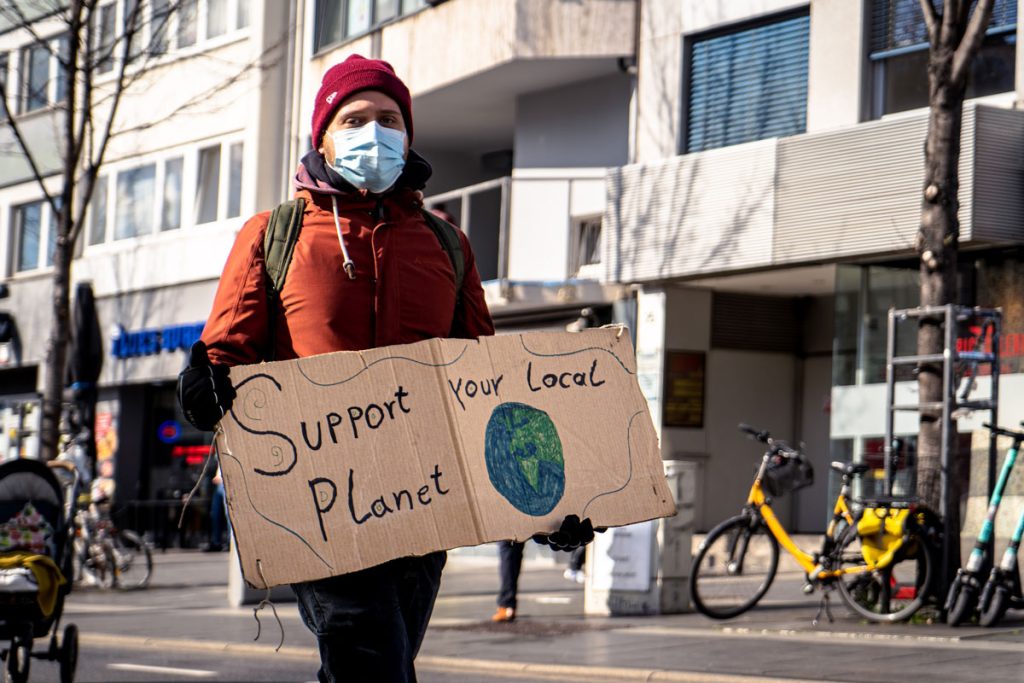This article is part of a series of articles about Community-Led Philanthropy, co-hosted by GlobalGiving. The conversation explores the ways philanthropy can support community-led change.
Local communities around the world invest unmatched time, resources and energy in cultivating, stewarding, and defending the landscapes that provide for their livelihoods and wellbeing. As the environment erodes and the climate becomes less predictable, the struggle is global, but one in which the time, effort and investment are overwhelmingly made at the local level. Local actors hold the knowledge of their ecosystems, have the deepest stake in their protection, and have developed diverse institutions for natural resource management that are critical in providing resilience in the face of disturbance, scarcity or crisis.
Unfortunately, many of the modern systems and institutions set up to protect the planet have been designed in a top-down way that at best ignores local efforts and leadership, missing a critical investment opportunity, and at worst threaten community efforts, taking decisions and access away from local people and advancing outside agendas.
Global Greengrants Fund believes solutions to environmental harm and social injustice come from people whose lives are most impacted. That is why in our participatory grantmaking model, we centre the expertise and lived experience of local activist advisors, who accompany and fund grassroots movements, especially those led by women, youth, Indigenous Peoples, and people with disabilities.
The community-led change we support is both tangible and systemic at the same time; protecting ecosystems, addressing environmental injustices, resisting harmful developments and transforming the underlying extractive systems and mindsets that have led to the climate and nature crises we are collectively facing today. For example, supporting women farmers in Indonesia who address both immediate livelihood and climate adaptation challenges, as well as challenging wider food and patriarchal systems; or youth activists in Zimbabwe who are creating inclusive spaces for young women and youth with disabilities to engage on climate change and disability rights.
Despite the abundance of evidence that this type of community-led change is essential to address environmental injustices and protect our ecosystems, Indigenous Peoples and local communities protect 80 per cent of the Earth’s biodiversity. Nevertheless, they receive less than one per cent of philanthropic support for climate change. Why is philanthropy behaving this way? Is it lack of evidence that is driving the decisions? Are we not effectively measuring and proving the impact of local solutions? How can we collectively shift strategies and investment to communities to tackle the most urgent crises that humanity is facing?

Photo credit: Unsplash
In our experience at Global Greengrants Fund, grassroots grantmaking has allowed us to see, time and again, the great power, effectiveness, and unmatched potential of social and environmental justice movements of people who are leading change. We know this from listening to the stories and engaging in conversations where learning is happening. Philanthropy needs to be less obsessed with proving through traditional measurement tools that grassroots movements are indeed creating change, and more interested in learning how change really happens.
Systems change is not achieved by top-down interventions from the outside; it happens from the ground up, person to person, local group to local group. This is a challenge to traditional philanthropies, who tend to focus on large-scale partnerships with established institutions. Luckily, we all exist in a funding ecosystem, in which many actors have for a long time built funding mechanisms that are led by and responsive to communities – funds based in the Global South who have formed Alianza Socio-Ambiental Fondos del Sur (an alliance called Socio-Environmental Funds of the Global South), community foundations, and allied Northern-based funds with participatory models in which decision-making is led by grassroots activists, like Global Greengrants Fund.
Collectively, this field of community-led philanthropy is learning, adapting, shifting power. As Global Greengrants, we have been on a journey to frame our learning vision, and we are keen to engage with others to continually improve our understanding of impact and accountability – to our network and grantee partners, our donors, ourselves.
Guided by this vision, our organisation is on a journey towards ongoing learning; as part of a decentralised ecosystem that is continually listening, sharing and testing the assumptions that underpin our theory of change. We work to create a culture of enquiry, reflection, experimentation and listening, which embeds strategic thinking and innovation in all aspects of our work, on an ongoing basis, and ensures Global Greengrants Fund is a dynamic and forward-looking learning and knowledge-sharing organisation that can fulfil its mission effectively. The listening approach crucially also directs us to measure what matters and what our grassroots partners tell us is the most significant change they want to work towards.
In this learning process, like in our grantmaking, we understand that funding communities means letting go of power – power to control the narrative, outcomes and impact of the work. Only when we are ready to let go of our power will we become valuable allies and partners of communities in their critical work.
Laura Garcia is the President and CEO of Global Greengrants Fund, and Eva Rehse is the Executive Director of Global Greengrants Fund UK.







Comments (0)
This lack of awareness can lead to underestimating the impact and effectiveness of local solutions.